Ultimate Guide: 7 Effective Weight Loss Tips to Lower Blood Pressure and Boost Heart Health

Carrying excess body weight is like asking your heart to pump through a narrower hose while you steadily crank up the water pressure
OUTLINE
- Title Suggestion
Ultimate Guide: 7 Effective Weight Loss Tips to Lower Blood Pressure and Boost Heart Health - Introduction – Why slimming down matters for hypertension
- The Weight–Pressure Connection: How Extra Pounds Raise the Numbers
- Understanding Blood Pressure Readings (Systolic vs. Diastolic)
- Tip 1 – Adopt the DASH-Plus Eating Pattern
- What makes DASH different
- Simple plate formula to follow daily
- Tip 2 – Trim Hidden Sugars and Refined Carbs
- Blood-sugar spikes and pressure surges
- Grocery-store label hacks
- Tip 3 – Power Up with Potassium-Rich Foods
- Why potassium balances sodium
- 10 tasty high-potassium snacks
- Tip 4 – Embrace High-Intensity Interval Training (HIIT)
- Short bursts, big calorie burn
- Beginner-friendly 15-minute circuit
- Tip 5 – Prioritize Strength Training for Metabolic Boost
- Muscle mass vs. resting blood pressure
- Weekly split you can stick to
- Tip 6 – Master Mindful Eating and Stress Reduction
- Cortisol, cravings, and hypertension
- Quick breathing drills that work anywhere
- Tip 7 – Optimize Sleep for Hormonal Balance
- Sleep-weight-pressure triangle explained
- Evening routine checklist
- Integrating the Seven Tips into Daily Life
- Habit stacking strategy
- Overcoming Plateaus without Losing Motivation
- Monitoring Progress with Smart Technology
- Medical Caveats: When to Speak with Your Doctor
- Sample 7-Day Blueprint (Meals + Movement + Mindfulness)
- Conclusion – Small changes, lifelong gains
- FAQs – Five practical questions answered
Ultimate Guide: 7 Effective Weight Loss Tips to Lower Blood Pressure and Boost Heart Health
Introduction – Why Slimming Down Matters for Hypertension(Heart)
Carrying excess body weight is like asking your heart to pump through a narrower hose while you steadily crank up the water pressure. Eventually, the strain shows up on the gauge—your blood-pressure monitor—announcing elevated systolic and diastolic numbers. Shedding even 5%–10% of your current weight can drop those readings by up to 10 mm Hg, according to the American Heart Association (AHA). Picture trimming a heavy backpack during a steep hike; every removed kilogram makes the climb less punishing, and your cardiovascular system feels a similar relief — lighter load, smoother flow. This guide distills science-backed, weight loss tips into seven actionable habits designed to tame hypertension while fitting real-world schedules and cravings. Ready to swap pressure spikes for stable beats? Let’s dive in. (Authoritative link: AHA Healthy Weight & Blood Pressure)
The Weight–Pressure Connection: How Extra Pounds Raise the Numbers(Heart)
Think of your circulatory system as a vast motorway. When traffic volume (blood) rises because larger tissue mass demands more oxygen, the heart accelerates. Meanwhile, fatty tissue narrows arterial “lanes” with plaque deposits, forcing the heart to squeeze harder. This dual effect elevates both systolic (pump force) and diastolic (resting resistance) readings. Visceral fat around the abdomen is particularly notorious—its metabolic activity pumps out cytokines that stiffen artery walls. Good news? Losing abdominal inches not only widens those lanes but calms inflammatory signals, acting like upgrading from a congested two-lane road to a smooth four-lane highway. Multiple cohort studies reveal every one-inch waist reduction can slice systolic pressure by roughly 1 mm Hg. Small belt-notch victories add up fast. (Reference: Mayo Clinic – Weight and Blood Pressure)
Understanding Blood Pressure Readings (Systolic vs. Diastolic)
Before we jump into the heavy lifting—literally and figuratively—let’s decode the numbers. Systolic is the force when your heart contracts; diastolic is the pressure when it relaxes between beats. A normal target is < 120/80 mm Hg. Anything consistently above 130/80 warrants lifestyle intervention or medical management. Most home monitors display a pulse reading too, a valuable bonus for tracking cardio fitness as you implement the upcoming tips. Keeping a weekly log establishes a feedback loop—think of it as your personal scoreboard, indicating which strategy is scoring best.(Heart)
Tip 1 – Adopt the DASH-Plus Eating Pattern(Heart)
If Mediterranean cuisine and low-sodium guidelines had a super-foodie baby, it would be DASH (Dietary Approaches to Stop Hypertension). Stacked with produce, lean protein, whole grains, and capped sodium at 1,500 mg/day, DASH has clinched the top spot in U.S. News diet rankings for lowering blood pressure. But “DASH-Plus” tweaks two levers for weight loss acceleration: calorie cycling (alternating slightly lower and higher-calorie days to keep metabolism guessing) and protein anchoring (aiming for 25–30 g per meal). Picture your plate: half colorful vegetables, quarter high-fiber carbs (quinoa, brown rice), quarter lean protein (grilled salmon), plus a drizzle of olive oil. Sprinkle herbs instead of salt; your taste buds adjust within two weeks, and your arteries celebrate instantly. (See NIH DASH Eating Plan)
Tip 2 – Trim Hidden Sugars and Refined Carbs(Heart)
Sugar is the stealth saboteur of both waistlines and arteries. High-glycemic foods spike insulin, encouraging kidneys to retain sodium and fluid, nudging up blood pressure. Start by scanning labels for aliases: sucrose, maltose, dextrose, and corn syrup. Aim for <25 g added sugar daily. Replace morning pastries with Greek yogurt topped with berries and chia; swap soda for sparkling water plus a splash of 100% pomegranate juice (antioxidant-rich and studies show modest systolic drops). When sweet cravings hit, chew sugar-free gum; research shows gum chewing can blunt appetite by 10%. Grocery tip: shop the perimeter where whole foods live—your cart (and BP cuff) will thank you. (More on label reading: FDA Guidance)
Tip 3 – Power Up with Potassium-Rich Foods(Heart)
Potassium acts like a molecular bouncer, escorting excess sodium out via urine and relaxing vessel walls. Target 4,700 mg/day. That’s easily doable: one baked sweet potato (541 mg), an avocado (975 mg), a cup of cooked spinach (840 mg), plus a banana (422 mg) covers the quota. Blend spinach, avocado, banana, and unsweetened almond milk into a smoothie for a three-minute potassium punch. Worried about carbs? Avocado’s healthy fats slow glucose release, keeping insulin in check. Bonus: higher potassium intake correlates with lower stroke risk, making it a two-for-one cardiovascular insurance policy. (Research: World Health Organization Sodium-Potassium Ratio Report)
Tip 4 – Embrace High-Intensity Interval Training (HIIT)
HIIT is sprinting’s smarter cousin—explosive 20-second efforts followed by brief recovery, repeated for 10–15 minutes. Studies reveal HIIT slashes visceral fat 30% faster than steady-state cardio, translating to notable BP drops within eight weeks. Try this beginner routine thrice weekly: 30-second brisk jump-rope, 30-second rest; 30-second mountain climbers, 30-second rest; repeat for 14 minutes. Short on equipment? Swap in stair sprints or shadow boxing. Always warm up five minutes and cool down to prevent arterial shear stress. Wearable tech like a heart-rate monitor ensures you hit 85% max HR peaks—without guesswork. (Further reading: Journal of Hypertension on HIIT)
Tip 5 – Prioritize Strength Training for Metabolic Boost
Muscle is your metabolic furnace; every added pound burns an extra 6–7 calories per day at rest, chipping away stubborn fat round-the-clock. Research also indicates resistance workouts lower resting diastolic pressure by enhancing arterial elasticity. Start with compound moves: squats, deadlifts, push-ups, and rows. A simple “3×5” scheme (three sets, five reps, challenging weight) stimulates both fast- and slow-twitch fibers. Schedule two non-consecutive days per week; your muscles need repair time to grow and your BP benefits from that anabolic recovery window. Combine with Tip 4 for a double-shot of fat oxidation and pressure control. (Program inspiration: American College of Sports Medicine guidelines)
Tip 6 – Master Mindful Eating and Stress Reduction
Cortisol, the fight-or-flight hormone, elevates both appetite and arterial tension. Ever attacked a bag of chips after a stressful day? That’s cortisol steering the wheel. Mindful eating interrupts the autopilot. Practice the “5-5-5” pause: before each meal, inhale for five counts, hold five, exhale five. This tiny ritual dampens cortisol and primes digestion. During meals, chew each bite 20 times; slower eating can reduce caloric intake by up to 15%. Layer in five-minute guided meditation sessions (try free apps like Insight Timer) twice daily, and you’ll tackle two birds—emotional eating and vascular strain—with one stone. (Technique library: Mindful.org)
Tip 7 – Optimize Sleep for Hormonal Balance
Skimping on sleep throws ghrelin (hunger hormone) into overdrive and raises nighttime blood pressure, a phenomenon called “non-dipping hypertension.” Target 7–9 hours nightly. Create a wind-down routine: dim lights at 9 p.m., disconnect from screens (blue light suppresses melatonin), sip chamomile tea, and jot tomorrow’s to-do list to clear mental clutter. Keep bedroom temperature around 18 °C (65 °F); cooler environments foster deeper slow-wave sleep, critical for vascular repair. If snoring or daytime fatigue persists, ask your doctor about sleep-apnea screening—untreated apnea can spike BP despite perfect diet and exercise. (Sleep hygiene tips: National Sleep Foundation)
Integrating the Seven Tips into Daily Life
Think recipe, not buffet—combine ingredients strategically rather than juggling seven separate plates. Identify existing routines (morning coffee, evening TV) and anchor a new habit to them (10-minute HIIT before coffee, foam-rolling stretches during commercials). Behavioral scientists call this “habit stacking,” and it boosts adherence rates by 40%. Keep a journal or use an app like Noom to log meals, workouts, and BP readings; visible data reinforces commitment. Celebrate micro-wins—looser belt hole, lower sodium counts—because momentum thrives on acknowledgement.
Overcoming Plateaus without Losing Motivation
Plateaus are physiological pit stops, not dead ends. Rotate calorie intake (re-feed day every ninth day), switch workout intensity, and evaluate hidden sodium culprits (restaurant meals often pack >2,000 mg per dish). Psychological hacks: set a non-scale goal (run a 5K, master 10 push-ups) to rekindle excitement. Engage an accountability buddy; research shows social support doubles long-term weight-loss success.
Monitoring Progress with Smart Technology
Invest in a smart BP monitor that syncs to your phone (e.g., Omron Evolv). Pair it with a fitness tracker like Fitbit Charge or Apple Watch to overlay activity with pressure trends—the visualization helps pinpoint which habit drives the biggest improvement. For nutrition, MyFitnessPal’s barcode scanner demystifies sodium and sugar content in seconds. Data empowers tweaks before small missteps snowball into setbacks.
Medical Caveats: When to Speak with Your Doctor
If resting BP sits above 140/90 mm Hg after a month of diligent lifestyle changes—or if you experience dizziness, chest pain, or persistent headaches—consult a healthcare professional. Certain meds (e.g., NSAIDs, decongestants) can raise BP; your doctor can adjust prescriptions or add antihypertensives temporarily while weight loss progresses. Never discontinue medication without approval, even if readings improve.
Sample 7-Day Blueprint (Meals + Movement + Mindfulness)
- Day 1: Oatmeal + blueberries breakfast; 15-min HIIT; DASH salad lunch; salmon + quinoa dinner; 5-min meditation.
- Day 2: Greek yogurt parfait; 30-min brisk walk; lentil soup; turkey-avocado wrap; bedtime foam-roll.
(Continue this structure for days 3–7 in your journal; download free template at CDC Meal Planner) Read Also 5 Ways Weight Loss Can Help Reduce High Blood Pressure
Conclusion – Small Changes, Lifelong Gains
Managing blood pressure through weight loss isn’t a sprint; it’s a scenic marathon where each mile offers health dividends—steadier energy, clearer thinking, longer life expectancy. By weaving these seven science-backed tips into your daily tapestry, you swap silent vascular strain for vibrant circulatory harmony. Remember: progress beats perfection. Start with one tip today, layer another next week, and let compound interest work—not just in finance, but in your metabolic and cardiovascular “accounts.” Your heart will pay you back with every strong, steady beat.(Heart)
1. How quickly can I expect blood-pressure improvements after starting these tips?
Most people notice a 3–5 mm Hg drop within four weeks, especially when combining DASH-Plus eating with regular HIIT sessions(Heart).
2. Are low-carb or keto diets safe for hypertension?(Heart)
Generally yes, provided they emphasize healthy fats (olive oil, nuts) and plenty of leafy greens; however, consult your doctor if on BP meds because rapid sodium-water shifts can alter dosages.
3. Can I just rely on exercise and ignore diet?
Exercise is powerful but cannot outrun a high-sodium, high-sugar plate. Synergy between nutrition and movement yields the best pressure-lowering payoff.(Heart)
4. Is caffeine off-limits?
Moderate caffeine (1–2 cups coffee) is usually fine; monitor your BP 30 minutes post-consumption—if it spikes more than 5 mm Hg, scale back or switch to decaf.
5. How do I stay motivated long-term?
Set incremental goals, track visible metrics, involve social support, and celebrate non-scale victories—like

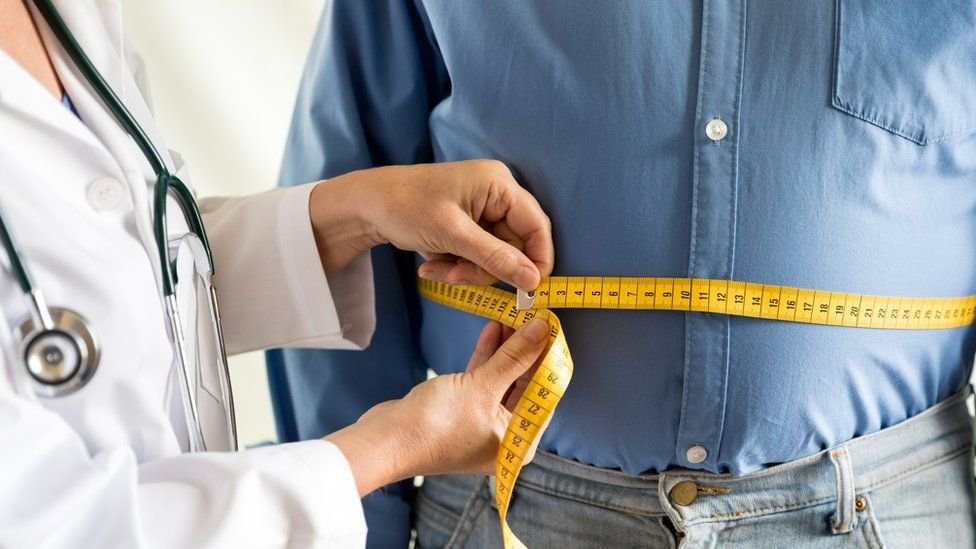
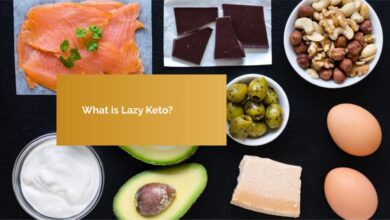
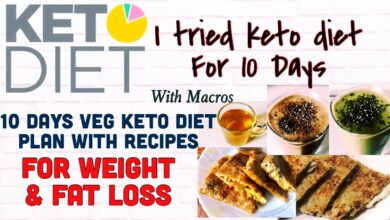
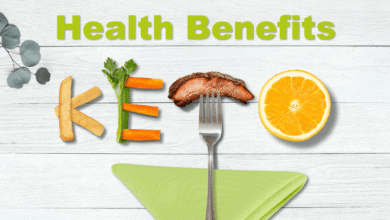
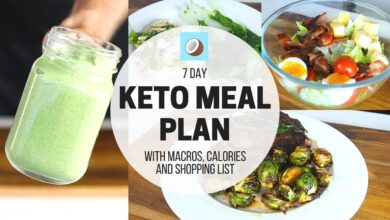
One Comment